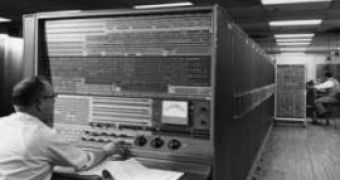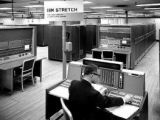Fifty years ago, IBM started a project to build up a machine meant to replace the company's 704 supercomputer. The end result came under the name of 7030, also known as Stretch, and it was able to perform about half a million instructions per second and 100 billion computations a day. IBM's CEO at that time, Thomas Watson, Jr. was not so happy with the machine and, although it was about 30 to 40 times faster than other systems, he called the 7030 a failure. In these conditions, and with only nine 7030 machines built, Stretch left behind a legacy able to make the participants in its creation proud after fifty years as well.
“All depends on your perspective,” said Fran Allen, one of the participants in the machine's creation. “A lot of what went into that effort was later helpful to the rest of the industry,” the former winner of the prestigious Turing Award said. Many of the concepts that became standard computer technologies were invented by Allen and the 300-some people who collaborated on Stretch. Multiprogramming, pipelining, memory protection, memory interleaving, and the eight-bit byte are included on the list.
Many members of the team were present on Thursday night at the Computer History Museum to revive memories and consider the legacy they left behind. Fred Brooks, a system planner for Stretch, along with Harwood Kolsky, who worked on product planning, joined Allen on stage for a panel discussion moderated by The New York Times reporter Steve Lohr.
“We were about 300 people working in Poughkeepsie (New York),” said Kolsky. “Individual teams met frequently. That's why it's hard to tell who invented what. Generally, morale was high. You wouldn't know it by looking up here, but it was a young person's group... there were only two people over 40. Most members of the team were in their 20s and 30s.”
Los Alamos Scientific Laboratory pledged for the building of a supercomputer at least 100 times faster than the 704. By the time Stretch came to the stage, IBM controlled around 70 percent of the computer market and almost 90 percent of the punch-card business and was already facing charges on monopoly control. According to Brooks, Watson ordered the original price cut to $10 million, and “that put it at under cost and violated antitrust... antitrust was a fact of everyday life in all our thinking”.
Nine Stretch systems were shipped around the world, yet the production line was closed forever. Some of the engineers involved in the project believed that Walton's decision would be a potential death knell to future supercomputer development. Yet, the next supercomputer, IBM's System/360, managed to score a huge success. The innovations developed for Stretch began entering the mainstream computing world.
Stretch is little known these days to most people, excepting those involved in the engineering and management of the project. It is worth noticing that Stretch remained the most powerful supercomputer in the industry until 1964. To underscore the moment, IBM's senior VP of Development and Manufacturing Rod Adkins, came to introduce the panel.
“It's a pretty good model of a highly ambitious program that, at the time, was considered having not met its objectives,” he said. “But when you look at some of the things that came out of that effort and how it's influenced the computer industry today, (Stretch) has had a profound, indirect, benefit to this industry.”

 14 DAY TRIAL //
14 DAY TRIAL // 
